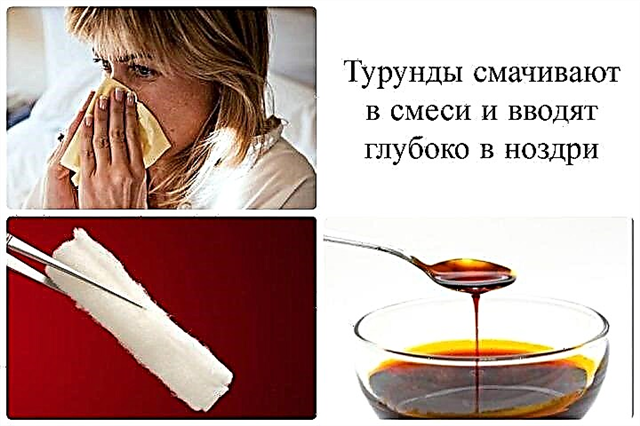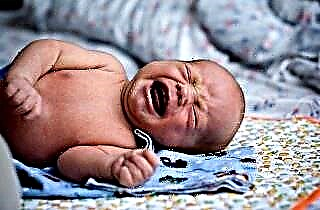Ear care - hygienic procedures to cleanse the ear canal from accumulated dirt and keratinized cells of the epidermis. Preventive measures protect the auditory analyzer from the penetration of pathogens that provoke the development of ear diseases. Routine cleaning prevents wax from accumulating and hardening in the ear canal, which can lead to plugging.
Hygiene procedures must be carried out in accordance with certain rules. Daily ear hygiene can weaken local immunity. Complete cleansing of the ear canal from earwax leads to infection of the outer and middle ear with pathogens.
Anatomical features

Improper and untimely care of a person's ears often leads to the formation of ear plugs or the development of inflammatory processes in the ear canal or eardrum. To prevent negative consequences arising in the process of carrying out hygienic manipulations, it is advisable to familiarize yourself with the structural features of the organ of hearing.
The outer ear is represented by a shell, which, narrowing, passes into the auditory canal and ends with a tympanic membrane. The external ear canal consists of bony and cartilaginous sections, the total length of which is 2.3-2.5 cm. In the cartilaginous section there are a large number of hairs and glands of external secretion that produce a sticky secret. There are no glands in the bone section and the skin in it is thinned, therefore it is prone to injury.
Contrary to popular belief, earwax is not a useless accumulation, but a liquid secretion that performs three important functions:
- antimicrobial - protects the organ of hearing from the penetration of pathogenic bacteria and insects;
- moisturizing - maintains the required level of moisture in the ear canal, which prevents dust from settling on the eardrum;
- cleansing - promotes the removal of keratinized cells of the epidermis from the ear canal.
From the above, it follows that daily ear hygiene, coupled with cleansing the ear canal of wax, can be harmful. Constant cleaning with cotton swabs only stimulates irritation of the ear mucosa and increases the risk of pathogens penetrating deep into the ENT organs.
Ear washing
How to care for your ears? To keep your ears clean, you need to perform hygienic manipulations regularly. However, this does not mean that the procedures to cleanse the ear canal from wax should be performed daily. The systematic removal of liquid secretion leads to the fact that the glands begin to function in an enhanced mode. Subsequently, an excess amount of liquid masses is formed, which over time are compacted and turn into ear plugs.
Experts recommend deep cleaning of the ear canal no more than 1-2 times a month. At the same time, it is advisable to wash the auricle daily to prevent the accumulation of opportunistic microorganisms on the skin surface. How to properly wash your ears?
- Lather your hands with antibacterial soap;
- insert the little finger shallowly into the ear canal;
- lather the auricle;
- tilting your head, rinse the outer ear with warm water;
- blot the auricle with a towel.
Important! Avoiding getting water in your ear will help prevent ear membrane inflammation.
This procedure is mandatory when caring for infants, due to the presence of failures in the processes of thermoregulation of the body. Excessive sweating is one of the key causes of otitis media in infants. Sweat contains proteins and organic compounds, which are an ideal "substrate" for the development of pathogens.
Ear cleaning
How to properly care for your ears? To prevent the accumulation of wax in the ear, you need to clean it no more than 1-2 times a week. According to otolaryngologists, the formation of plugs more often occurs in people who cleanse the ear canal daily. Often using cotton swabs, you can only push the liquid secretion into the bony part of the ear canal. Thus, the sulfur masses over time thicken and form plugs.
To prevent the accumulation of sulfur, you need to use cerumentolytics, i.e. preparations containing surface active components. They soften the wax and facilitate its evacuation from the ear canal. When carrying out hygiene procedures, the following rules must be taken into account:
- instill 2-3 drops of a wax softener in each ear;
- close the ear canal with a cotton swab for 30-40 minutes;
- soak a cotton swab in hydrogen peroxide;
- gently clean the ear canal from the accumulated liquid.
To cleanse the external auditory canal, it is undesirable to use cotton swabs, since they help push the wax into the ear.
Childcare
How to wash the ears of a small child? Otolaryngologists warn that it is absolutely impossible to use cotton swabs to clean the auditory canals in infants. Children's skin is prone to injury, so even basic cleaning can cause damage.
Due to the fact that the sebaceous and sulfur glands are located only in the cartilaginous part of the ear canal, ear plugging occurs in 80% of cases due to inept hygiene procedures. In addition, the constant movement of the temporomandibular joints promotes the pushing out of dense masses towards the mouth of the ear canal.
According to otolaryngologists, special care for the patient's ears should be carried out exclusively under the supervision of a doctor. If a blockage occurs, it is necessary to seek help from an ENT doctor who, using special instruments, will extract the dense masses.
To clean the ears of babies, use cotton swabs with restraints. They help cleanse the ear canal from the wax that has accumulated exclusively in the cartilaginous part of it. Situations in which pieces of cotton wool can remain in the ear should not be allowed. To do this, before carrying out the procedure, wadded turundas should be wrapped in gauze.
Ear treatment
If scratches and abrasions occur in the auricle, it is necessary to treat with antiseptic agents. Their use will prevent the emergence of pathogenic flora in the organ of hearing and the development of otitis externa. The following can be used as disinfectants:
- boric alcohol;
 hydrogen peroxide;
hydrogen peroxide;- tincture of calendula;
- chloramphenicol alcohol.
It is advisable to use an antiseptic at least twice a day in order to speed up the healing process of the affected tissues. At the same time, it is important to perform all medical manipulations only with clean hands. Otherwise, you can bring in an infection and only provoke the development of ear pathology.
Not always, a special treatment of the ears prevents the occurrence of inflammatory processes in the tissues. When hyperemia, itching or painful sensations appear, external preparations with anti-inflammatory and antimicrobial properties should be used. Some of the most effective remedies include:
- "Levomekol" is a combined preparation of immunostimulating and antibacterial action. Inhibits the synthesis of proteins in disease-causing cells, which leads to a decrease in their number in the foci of inflammation;
- "Baktosin" is an antiseptic agent with pronounced disinfecting and wound healing properties. It is used to treat abrasions, microcracks, scratches, trophic ulcers and other skin lesions;
- "Acerbin" is a keratolytic, wound-healing and anti-inflammatory drug that can be used to eliminate non-healing wounds, pyoderma and superficial burns;
- "Aekol" is a drug that promotes the healing of purulent-necrotic lesions on the skin. Accelerates cellular metabolism, due to which the regeneration of the affected tissues occurs.
Oily preparations should not be poured into the ear canal. If there is damage in the passage itself, cotton turundas soaked in an antiseptic are used.
Specialist recommendations
According to most experts, ear care should not be limited to routine cleaning and daily washing of the auricle. In order to prevent the development of diseases, it is advisable to observe the following recommendations for ear care:
- before going to bed, you need to remove earrings to prevent injury;
- ears should be washed at least twice a day: in the morning and before bedtime;
- after bathing, moisture in the ear canal must be managed with cotton wool or ear sticks;
- in the presence of ear punctures, the earlobe must be treated daily with antiseptic agents for a month.

It should be noted that the constant wearing of headphones, especially in-ear headphones, contributes to hearing impairment and the accumulation of sulfur. According to statistics, ear plugs are 3 times more likely to form in people who constantly listen to music with headphones. Rubber materials inserted into the external auditory canal irritate the skin and induce the production of earwax. In addition, hearing aids and in-ear headphones are breeding grounds for pathogens that cause otitis externa.
Important! To prevent otitis externa, headphones and hearing aids should be treated with antiseptics before use.

 hydrogen peroxide;
hydrogen peroxide;


